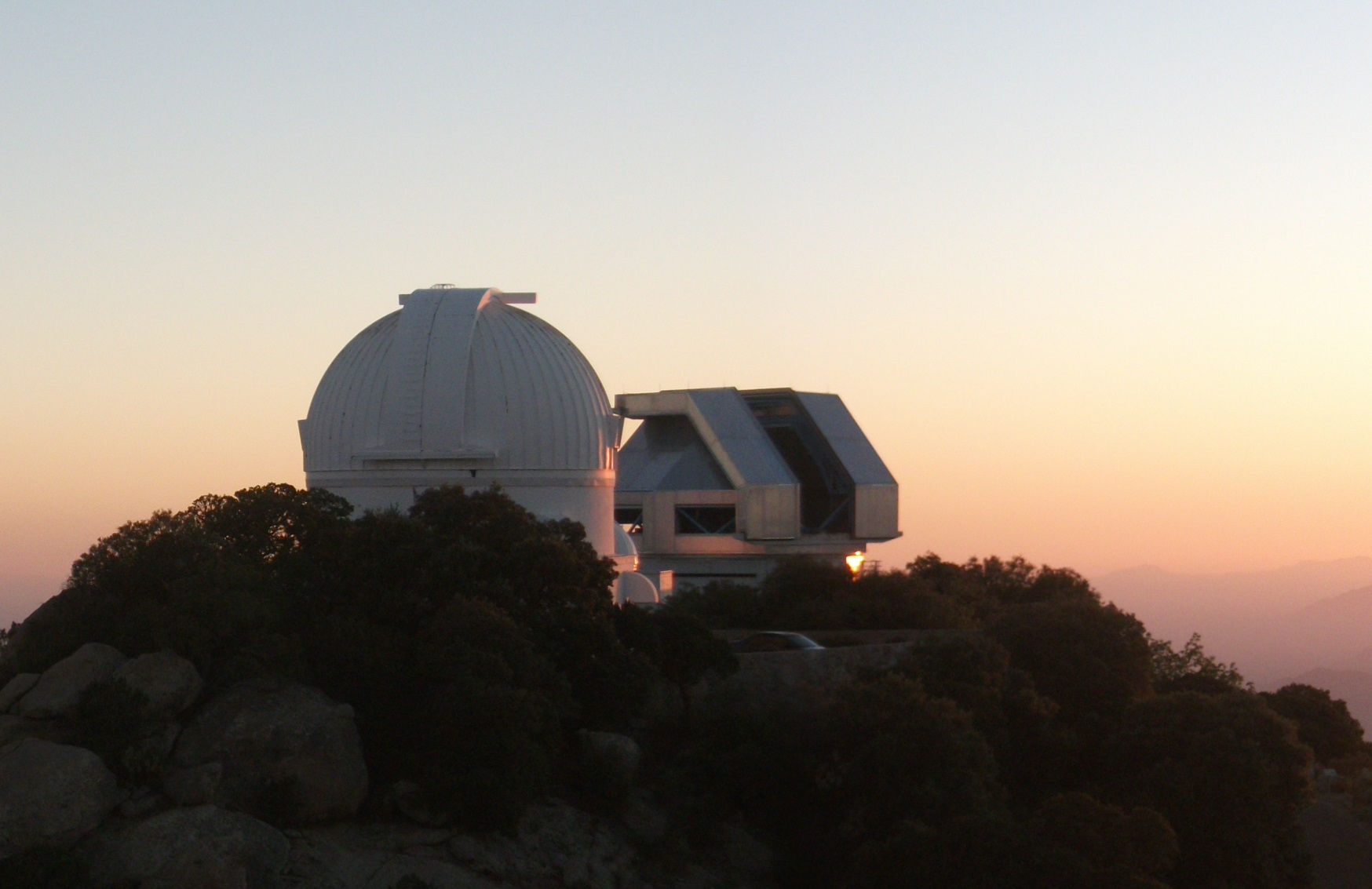My primary research utilizes
multi-wavelength observations (UV
through mid-infrared) in the
investigation of local stellar
populations. Of particular interest is
the use of star clusters and giant
stars to probe the structure and
evolution, chemical and dynamical, of
the Milky Way and other Local Group
galaxies. Related issues such as the
role of environment and dark matter
content of Milky way satellite
galaxies are also currently under
study.
Click on the images for
more information on my major research areas.

| Ahabar Hossain (BS expected Spring 2026) |
| Drew Chojnowski (BS 2011) | Skylar Manning (2017) | |
| Aaron Lobaugh (BS 2011) | Nicolas Dotson (BS 2019) | |
| AAron Rocha (BS 2011) | Mikayla Wilson (BS 2022) | |
| Conner McKeel (2011) | Nicole Riddle (BS 2022) | |
| Kelly Jakson (BS 2012) | Emilie Burnham (BS 2022) | |
| Brianne Meyers (BS 2013) | Katelyn Shelton (BS 2024) | |
| Cheyanne Sufka (BS 2015) | John Nguyen (Honors, BS 2024) | |
| Jordan Adams (BS 2016) |
| Amanda Jefferies (Summer 2010) | Amber McNaughton (Summer 2018) | |
| Jarrel Doorn (Summer 2011) | JaCoya Hodges (Summers 2020/21) | |
| Nikolas Gullemaud (Summer 2012) | Katelyn Thomas (Summer 2022) | |
| Kylee Martens (Summer 2014) | Kaleo Toguchi-Tani (Summer 2023) | |
| Thomas Grier (Summer 2016) | Hailey Wallace (Summer 2023) | |
| John Wise (Summer 2018) |
| Dr. John Donor (Ph.D. 2020) - SDSS-V Software (2023--) |
| Dr. John Donor (Ph.D. 2020) - SDSS-V Software (2020-2023) |
| Natalie Myers (Ph.D. expected 2025) |
| Alessa Wiggins (Ph.D. expected 2025) |
| Jonah Otto (Ph.D. expected 2027) |
| Rajesh Bachchan (Ph.D. expected 2029) |
| Dr. Taylor Spoo (Ph.D. 2024) - Senior Data Scientist, BAE Sstems |
| Dr. Amy Ray (Ph.D. 2021) - Staff Astronomer, Hobby-Eberly Telescope |
| Dr. John Donor (Ph.D 2020) - Research Scientist, TCU & SDSS-V |
| Matthew Melendez (MS 2019) - Kaiser Permanente |
| Dr. Julia O'Connell (Ph.D. 2017) - Postdoc, U. Concepcion |
| Dr. Ben Thompson (Ph.D. 2015) - Faire, Inc |
| Dr. Cassidy Newton (Ph.D. 2012) - VP Data Science, Warren-Douglas |
Cosmological Cold Dark Matter (CDM) models predict that a galaxy like
the Milky Way should have 100's of
satellite galaxies filled with dark
matter. The reality is that the Milky Way
has tens of satellites and how much dark
matter they have is not well
determined. A major complication in
measuring this is that many of these
galaxies are also being torn apart by the
Milky Way. The dynamics of dwarf galaxies
and stellar streams is the key to
understand the evolution of dark matter
on small scales. I have worked on
exploring the Milky Way dwarf satellites,
including Sagittarius, the Magellanic
Clouds, GASS, Carina, Leo I and II, Ursa
Minor, and Sculptor, as well as,
investigating star clusters associated
with the Galactic Anticenter Stellar
Structure "GASS", also know as the
"Ring", that may be associated with the
proposed "Argo" or "Canis Major" dwarf
galaxy. Much of this work is done in
collaboration with research groups at the
University of Virginia.
Work on the chemical evolution of the Sagittarius dwarf Spheroidal
galaxy is ongoing utilizing data from
SDSS-APOGEE and CTIO/Hydra spectroscopy data in conjunction with
collaborators at New Mexico
State University.
Considering the importance of galactic potentials in shaping the chemodynamical evolution of their stellar populations, it is unfortunate that less is known about the dynamics of the Milky Way than for other galaxies. A fundamental problem with exploring the Galaxy — one that thwarted Herschel, concerned Kapteyn (1909), was discovered by Trumpler (1930), and remains a roadblock in our detailed understanding of the Milky Way is extinction by dust. While the near infrared (NIR) photometry of 2MASS has allowed us to probe the Galaxy to dustier regions, our view of the densest, most prominent parts of our galaxy is still challenged by heavy reddening, which typically makes low latitude field star CMDs uninterpretable. However, the combination of 2MASS and Spitzer IRAC photometry allows a direct and powerful assessment of the line of sight reddening to any particular star — and across wavelengths where the reddening law is universal. At these wavelengths the color effects of reddening and stellar atmospheres are completely separable: The long wave-length spectral energy distributions (SEDs) of stars have the same Rayleigh-Jeans shape. Thus, the observed mid-IR colors contain information on the reddening to a star explicitly, whereas the NIR SEDs contain information on the stellar types. Using this powerful technique to make Spitzer-cleaned (J−Ks,Ks) CMDs of previously obscured regions of the Milky Way, we will investigate the structure and the dynamics of the Galactic bar. We have collected a larger spectroscopic sample of Milky Way M-giants and carbon stars to investigate the structure and the dynamics of the Galactic bar.